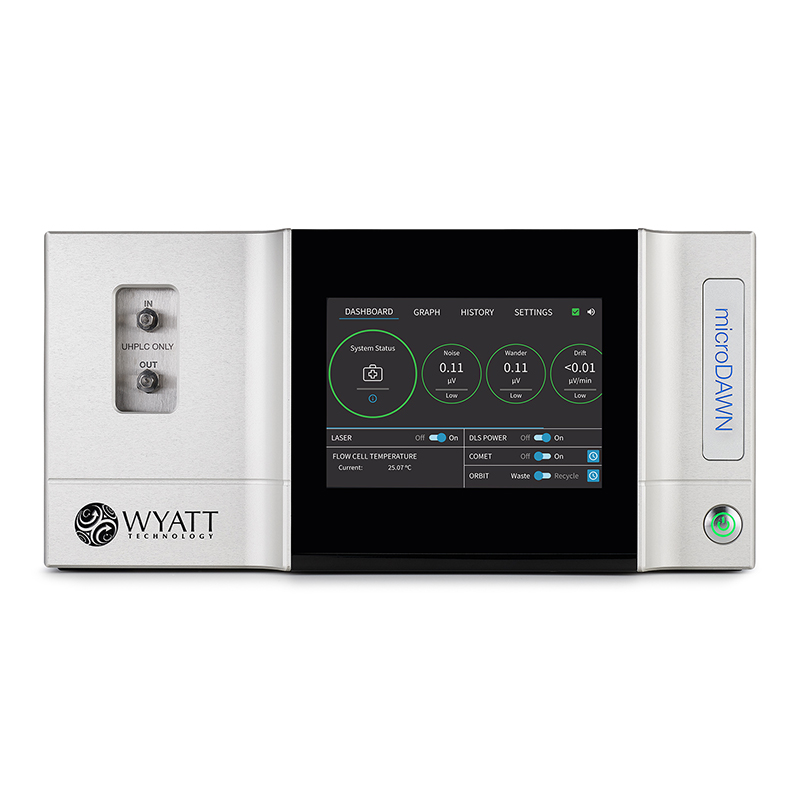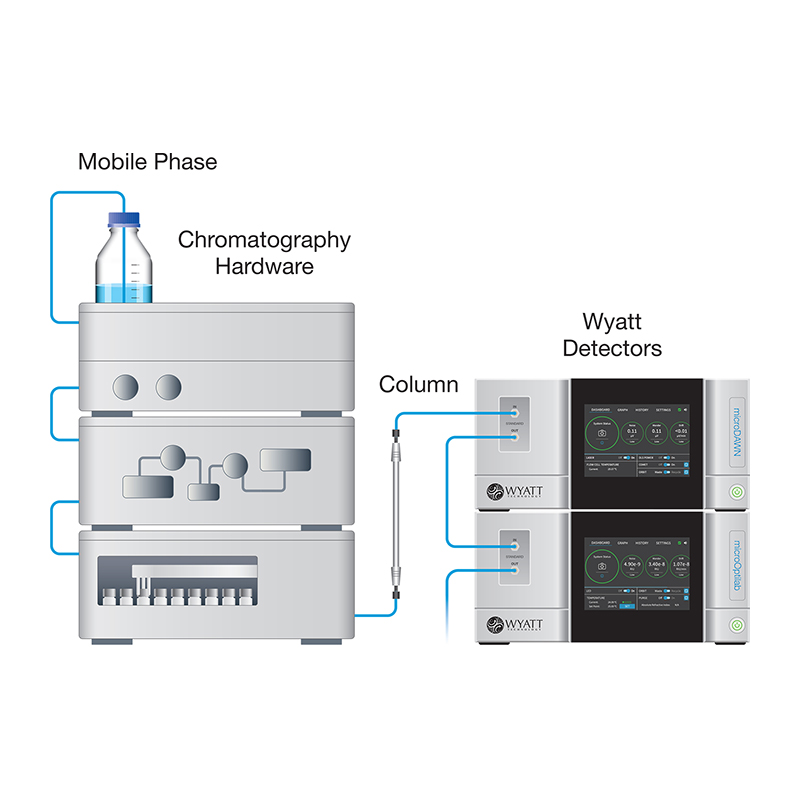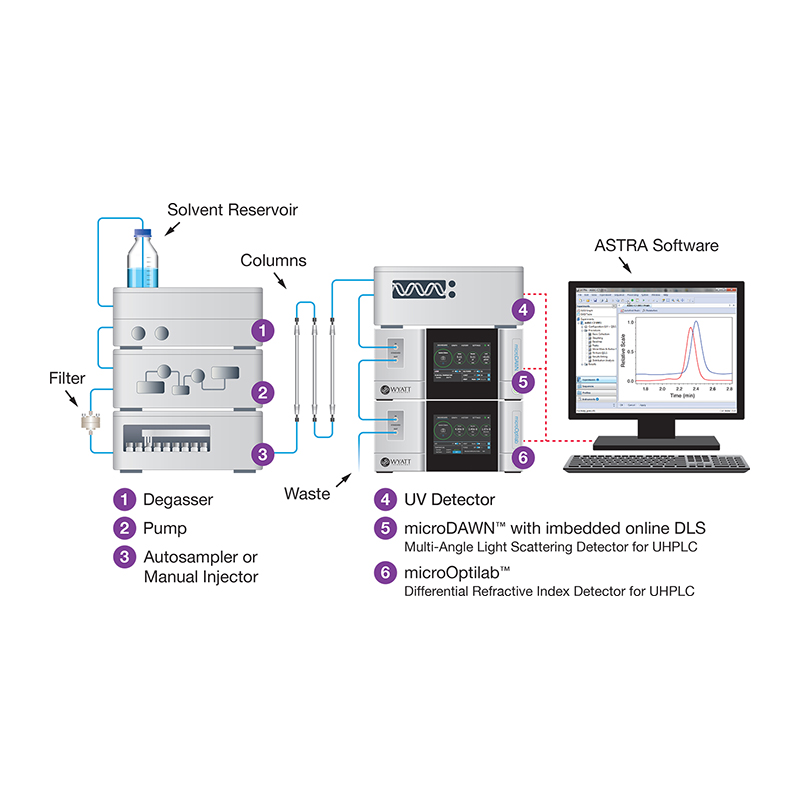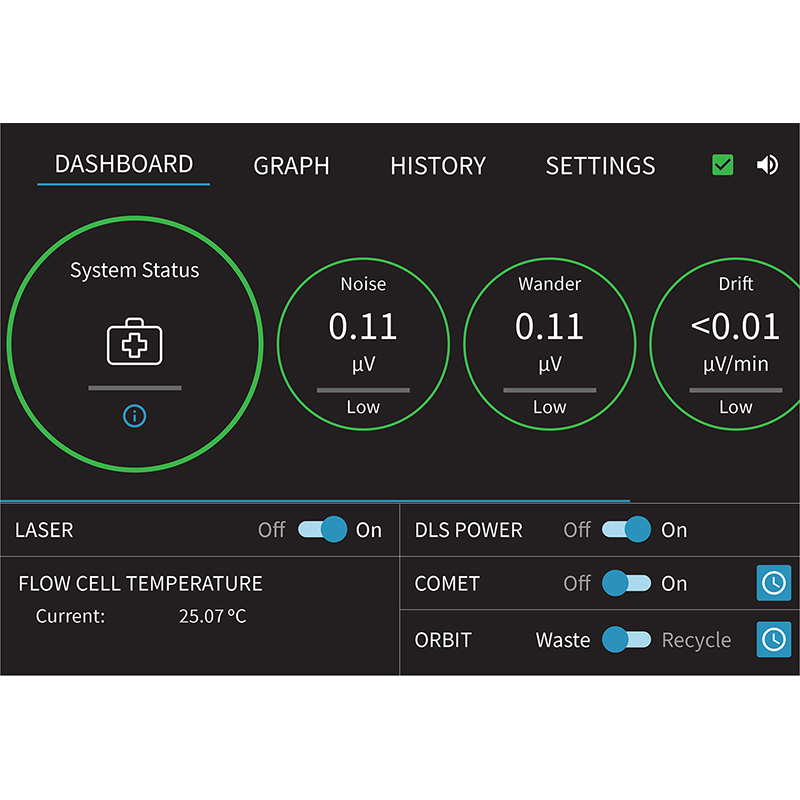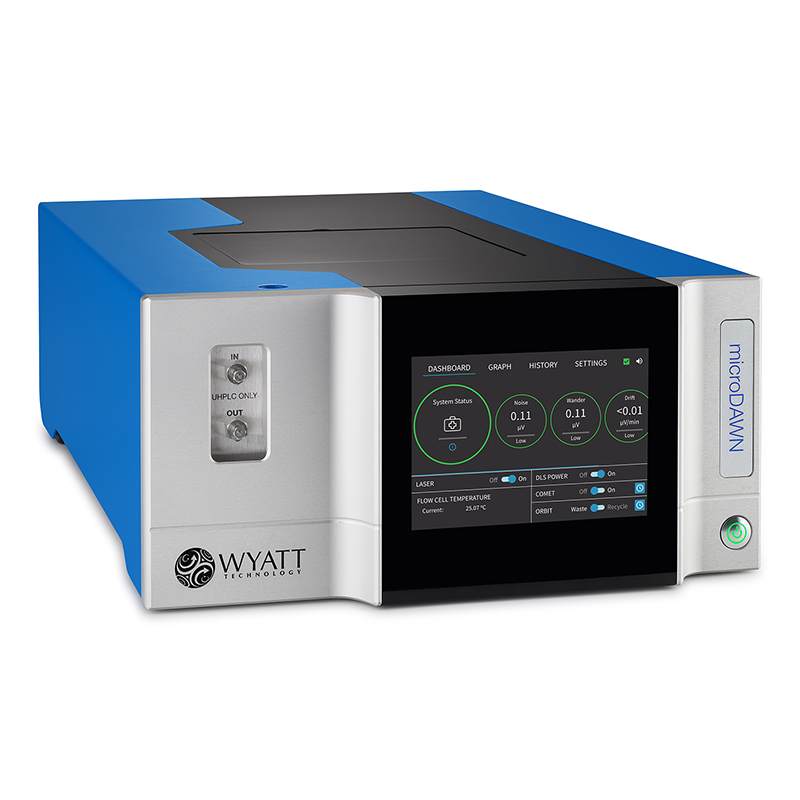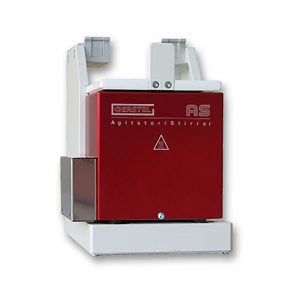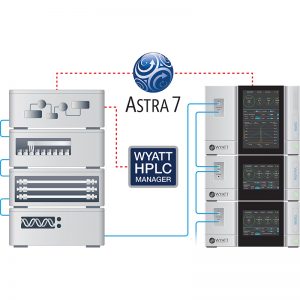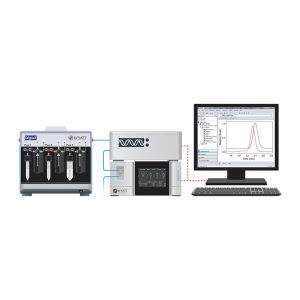Description
Distinctly from the miniDAWN, the microDAWN is uniquely suitable for use in conjunction with UHPLC Size Exclusion Chromatography (SEC-MALS) thanks to its small interdetector dispersion. In some cases it may be used with ion-exchange or other types of chromatography. Regardless of the specifics, the microDAWN produces minimal band broadening in order to maintain the narrow peaks typical of UHPLC.
- Mw from 200 Da to 10 MDa
- Sensitivity: 1.0 µg/mL BSA (66.4 kDa) in PBS; 50 ng/mL 100 kDa polystyrene in THF.
- Rg from 10 to 50 nm
- Ultra-stable laser
The microDAWN and its companion microOptilab Refractive Index Detector interface to most standard UHPLC systems. As these detectors are based on the advanced technology of Wyatt’s miniDAWN and Optilab, respectively, users may be confident in the underlying capabilities cited in thousands of peer-reviewed publications.
Ultrasonic Cleaning Included
Each microDAWN includes a COMET ultrasonic transducer that cleans MALS flow cells automatically by agitating the fluid and loosening particles from the glass surfaces.
Online Operation
The microDAWN will work downstream of all types of UHPLC systems for analysis of molar mass and size distributions (see SEC-MALS), and derivatives such as conformational analysis. For those systems equipped with a UV, RI, fluorescence or other type of concentration detector, the microDAWN accepts up to 4 analog inputs so a 3rd-party concentration signal may be used in MALS calculations of molar mass. The microDAWN is set up downstream of a UV detector and upstream of a RI detector.
In most cases it is beneficial to connect an microOptilab as well as a UV detector. This permits universal concentration detection regardless of fluorophores or chromaphores. The combination of UV and RI signals is utilized in ASTRA’s Conjugation Analysis algorithm to characterize binary complexes such as glycoproteins, PEGylated proteins, membrane proteins enveloped in surfactant, or block co-polymers.

